The magnificent Ferris Wheel on the Midway Plaisance of the World’s Columbian Exposition opened to the public on June 21, 1893. Some first-hand accounts of riding in the mechanical monster capture the thrill of what it felt like for those first passengers—many of whom may have never even been in a building with more than a few floors tall—to be lifted into the air.
A special correspondence to the San Francisco Morning Call (July 7, 1893) shared this experience on the Ferris Wheel during its second week in operation. The elated rider may have remained in the “zenith of glory” for some time after getting off the ride.
ROLLS SKYWARD.
The Great Ferris Wheel at the World’s Fair.
TURNS ON A MIGHTY AXLE.
Three Thousand Persons Are Carried Upon a Single Trip.
Chicago, June 28.—The great Ferris wheel has commenced running.
From the north, east, south and west the one object that looms up before the astonished eyes of the sightseer is the Ferris Wheel. Higher than the domes of the big fair buildings, higher even than the great Auditorium tower, into which are daily elevated hundreds of visitors, towering above the Turkish minarets and Egyptian obelisks which crowd the Midway Plaisance, there is the monster wheel, a mighty monument to American inventive daring.
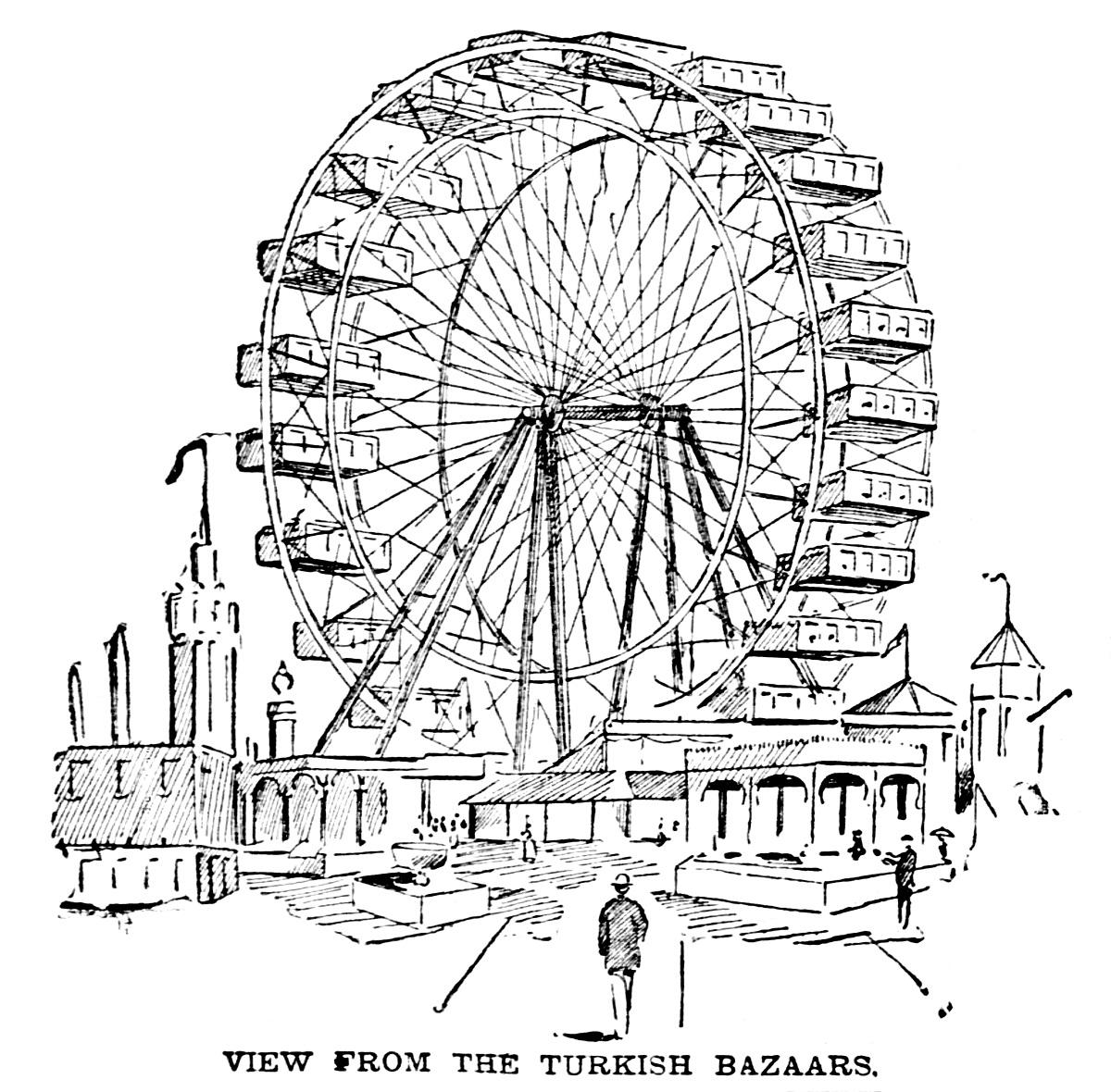
“View from the Turkish Bazaars” of the Ferris Wheel at the 1893 World’s Fair. [Image from “Rolls Skyward” San Francisco Morning Call July 7, 1893, p. 13.]
The contrivance resembles a bicycle wheel, supported by two slender sticks on each side, and seeming to have no strength or solidity whatever.
On a nearer approach, however, you soon discover that it is a very marvel of strength, being built upon the latest and most scientific construction, though, considering its great size, it is as light as a feather.
When you come right to it, and see the great steel supports looming up to the ponderous axle, and try to follow the intricate system of braces and supports, your fears vanish, and you are immediately attacked by impatient envy of those hundreds of people who are disdainfully curving over your head and mixing with the blue sky. You get right in line and buy your ticket, if it takes your last half dollar.
In general appearance the thing most resembles a huge squirrel wheel, with cars or cages upon the bars connecting the two rims. The wheel is 250 feet in diameter and carries over three dozen cages. The cages are hung upon axles or pivots, which turn as the wheel turns, thus keeping the cars always in a perpendicular position, each cage is considerably larger than an ordinary streetcar. The capacity of each is about sixty people, and that of the entire wheel is nearly 3000. Think of it. Three thousand people on a wheel!
The way the wheel is made to revolve is simplicity itself. The outer edge of both rims are [sic] cogged and come within five or ten feet of the ground, where they fit into smaller cogwheels, run by two powerful horizontal engines.
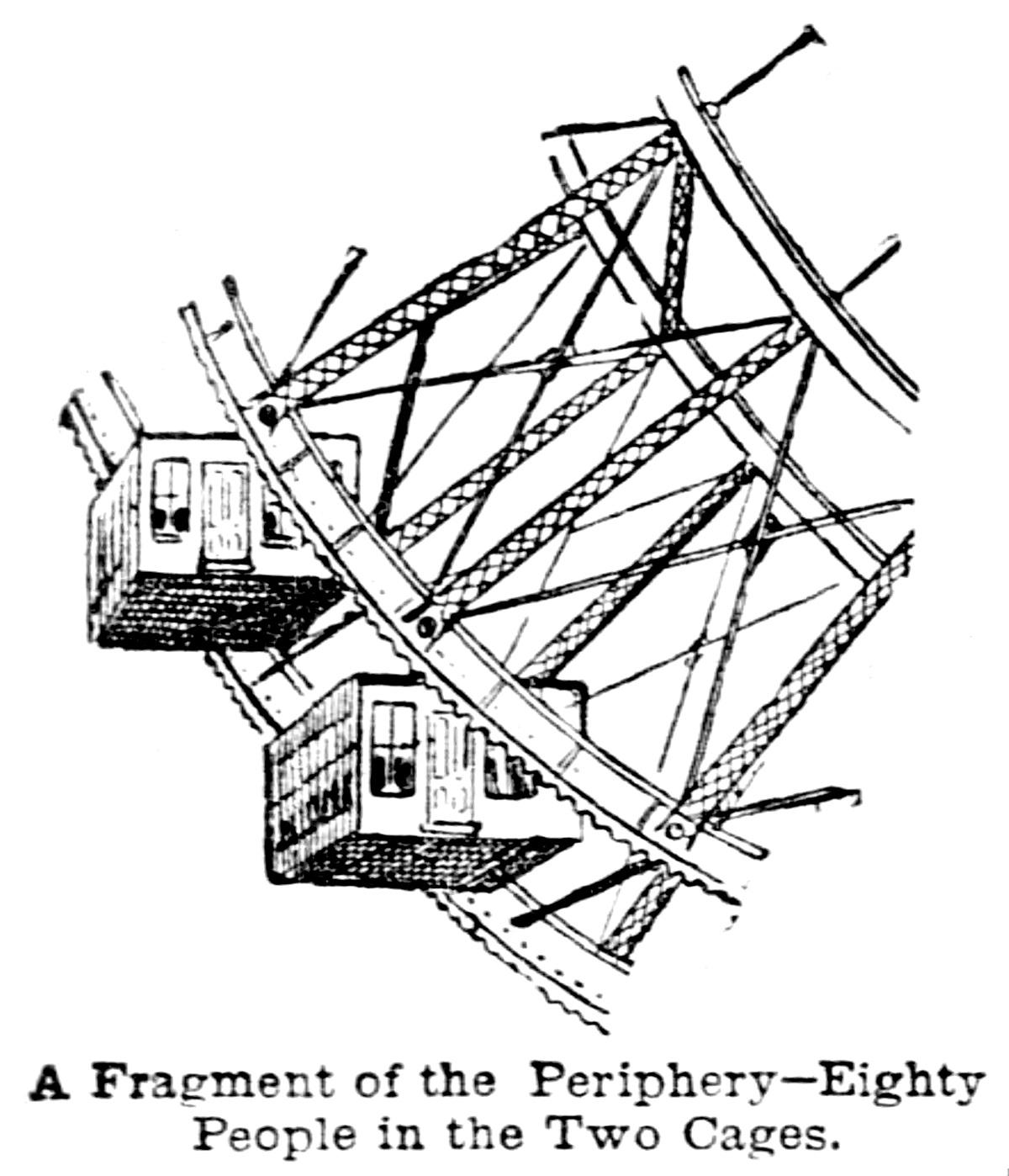
“A Fragment of the Periphery—Eighty People in the Two Cages” of the Ferris Wheel. [Image from “Rolls Skyward” San Francisco Morning Call July 7, 1893, p. 13.]
You are not afraid, but you feel queer. “I feel jest like a speck o’ mud on the tire of a cartwheel,” remarked an old farmer, as the car slid quietly backward. The old man settled down on a stool and proceeded to enjoy himself in the unique role of a speck of mud.
Still looking inside the wheel, you observe that the long perspective of cars are coming down very rapidly. But you begin to see less of their bottoms and more of their tops, and you realize that you are going up. Then, you rush across the car and look away from the wheel. You are bound to shiver just a little, even if you aren’t a little timid maiden. For there is positively nothing underneath you, the lower cars being inward as well as below you. Moreover, you are sailing forward and upward seemingly in the most independent manner.
Looking thus outwardly you have the sensation of being a bird. The dimensions of the Midway Plaisance contract and the people are becoming dwarfed. You fancy you must be nearing the top of the wheel, but on glancing within it you find you are only on a level with the axle, that is, but half way up.
Now instead of outwardly you sweep upward and backward and the cars below you commence bellying out to the front.
Chicago is below you. The Midway Plaisance and Jackson Park are mere features of the landscape. Miles out on Lake Michigan your vision extends; south you see Pullman and Lake Calumet. Washington Park is a little green check below you; the big boulevards are lengths of white string. Everywhere there are houses and houses. To the north there is the frowning, lowering center of commercial Chicago crowded with hundreds upon hundreds of stone Babels and heavy with smoke and haze.
You reach your zenith of glory, 265 feet above the earth, and then you slowly descend. This is the sensation. It is something worse than an elevator, or would be if the speed were greater; for, instead of merely going falling, you slant outwardly, as though upon the top of a falling wall. But you get used to it in a moment; and you have a fine clear view of the fair grounds and lake.
The wheel is so big that you practically go up over one section of the Midway Plaisance and descend upon another.
You are given two rides or revolutions, as they are elegantly termed by the crier, and it you become addicted to the pleasure of the ride you will have to expend more half dollars. An old fellow, with lots of spending money and a child-like fondness for being dangled in air, remarked to some of the occupants of the car that he had been at it all the morning and had expended about $5. Each revolution is equal to about 1000 feet, measured horizontally, and the old fellow had covered two miles over what is, perhaps, the most novel air line route in the world.
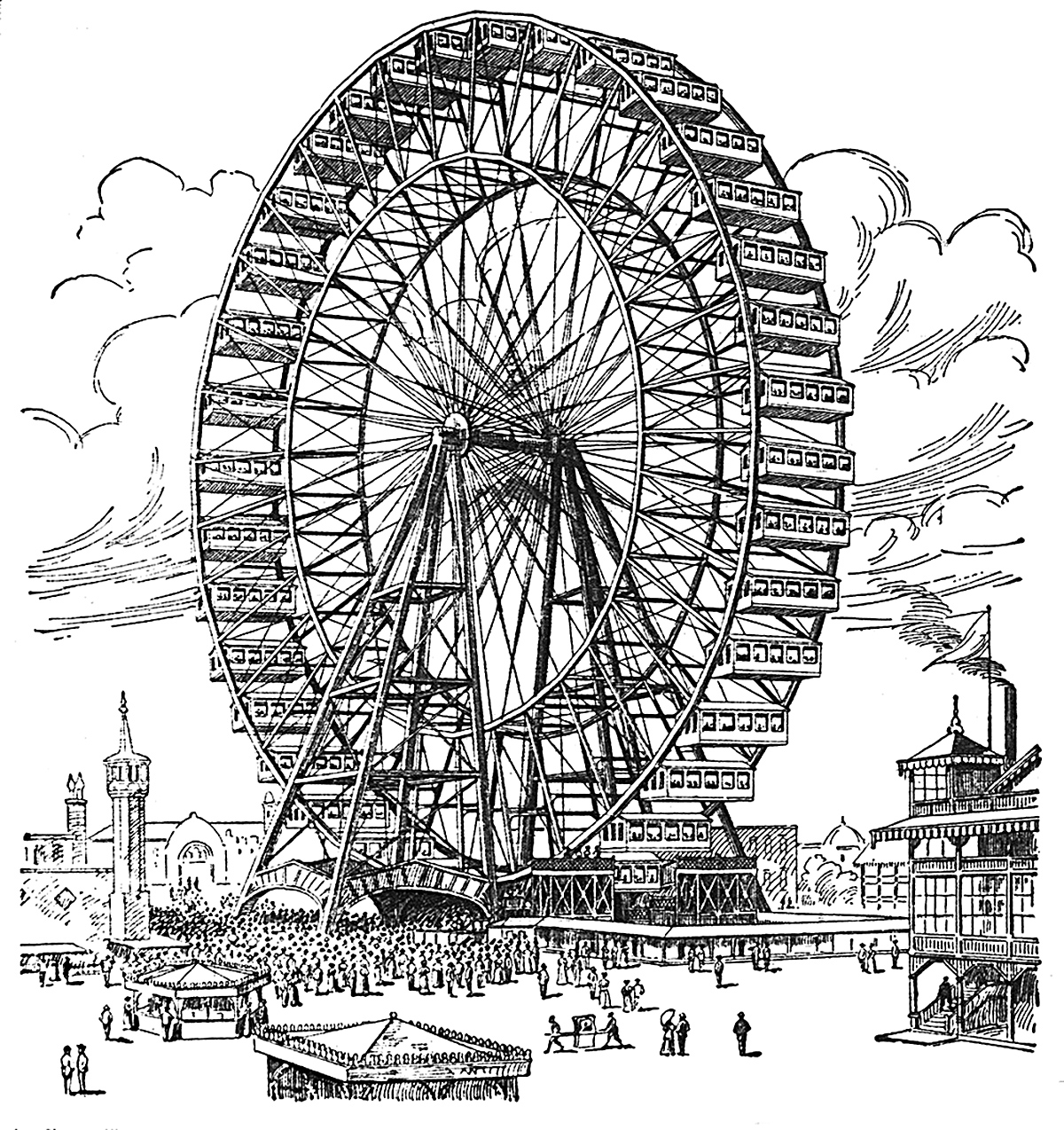
The great Ferris Wheel of the Columbian Exposition in Chicago. [Image from the Chicago Herald July 16, 1893.]

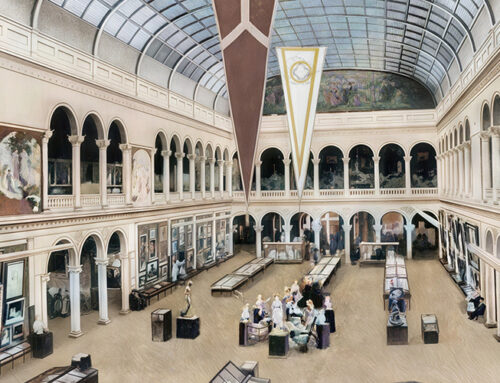
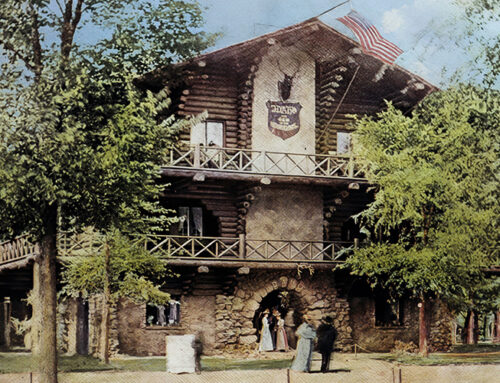
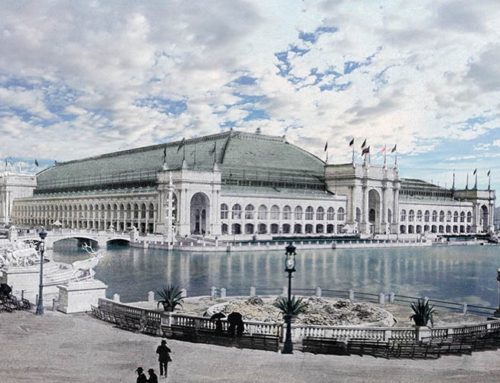


Leave A Comment